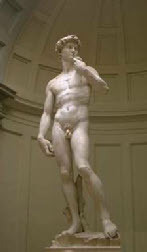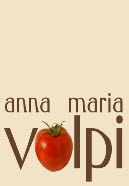



JOIN NOW
our Italian Cooking
Newsletter
our Italian Cooking
Newsletter





Publication or use of pictures, recipes, articles, or any other material form my Web site, on or off-line without written permission from the author is prohibited. If you would like to use my articles on your Web site or in your publication, contact me for details. Avoid infringing copyright law and its consequences: read the article 7 Online Copyright Myths by Judith Kallos
Read our
DISCLAIMER and
PRIVACY POLICY
before using
our site
-------------------
Linking Policy
Advertise with us
DISCLAIMER and
PRIVACY POLICY
before using
our site
-
Advertise with us
Copyright © 2003 - 2011 Anna Maria Volpi - All Rights reserved.
Anna Maria's Open Kitchen Site Map
site map
recipes
policies
about us
Some More Hot Topics You'd Like to See adv.
During the Renaissance, this magic land gave birth to some of the most influential characters in Western civilization These artists and architects, saints and philosophers, navigators and scientists include Amerigo Vespucci, the merchant and navigator who gave America its name, Giovanni da Verrazzano, Leonardo; Michelangelo, Lorenzo de’ Medici “The Magnificent”, Brunelleschi, Della Casa, Galileo, Giotto, Donatello, Botticelli, Dante, Machiavelli, and Boccaccio, to mention only a few.
The Etruscans, who inhabited Tuscany before the Romans, had a reputation for being great eaters and wine drinkers. Their habits were considered by many to be degenerate and the cause of their decline. In Roman times, until the fall of the Roman Empire, Tuscan cooking coincided with that of Rome. After the year 1000, and after the Crusades opened the way to the East, with the fear of barbarian incursions diminishing, the northern Italian cities became the center of production and commercial power.
At the end of the twelfth century, in spite of the permanent hostility between the factions loyal to the Pope (Guelfi) and those devoted to the emperor (Ghibellini), Florence grew to be independent. It was the most powerful city of Tuscany. The lily became the symbol of Florence and its supremacy. The food of the time was simple and meager. Dishes were based on grains or chestnuts and were merely flavored with herbs. Breads such as focaccia and castagnaccio originate in these times. Economic recovery in the mid 1300s set the basis for Tuscan and Florentine gastronomic supremacy during the first few centuries that followed.
Improved agricultural techniques made the products of the Tuscan countryside that we so appreciate today more widely available These included wine, olive oil, vegetables, pork, and all sorts of game. Shops offered porchetta (roasted piglet flavored with Tuscan herbs), cow meat, chicken, lamb, vegetables, and fish from the Arno River. Many of the recipes of the time remain alive in Tuscan cooking today.
In 1434, the town of Florence became a signoria and Cosimo de’ Medici, a powerful merchant and banker, became the lord. He governed with such wisdom that he was declared “Father of the Homeland” at his death. In 1439, the council of the Roman and Greek churches was held in Florence as guests of the Medici.
One story tells that two important terms in Tuscan cooking were born on this occasion. At a banquet, Greek Cardinal Bessarione tasted some roasted piglet and he exclaimed, “Aristos!” meaning “the best” in Greek. The Florentines present at the table thought he called that meat dish by that name, and since then, a whole loin of pork has been called “arista.”
Again, Cardinal Bessarione, when tasting a sweet wine exclaimed, “This is Xantos!” alluding to a similar wine produced in Greece. Those who heard him thought that he wanted to say the wine was so good that it was santo (holy). From then on, this special wine has been called Vin-Santo (holy wine), offered all over Tuscany as a dessert wine to go with the famous Cantucci “biscotti.”
With its enchanted landscapes and rolling hills covered with bright yellow fields of sunflowers, olive groves, and grapevines, hill towns, monuments, and art, Tuscany is the Italian region in every foreigner's dreams.
Lorenzo’s death in 1492 ended an era. This was the same year that the Europeans discovered America, an event that would have great historical significance in world history and in the gastronomy of the West.
Since Florence was a great commercial nexus of the time, Tuscan cooking was one of the first in Europe to be enriched by produce from the new world. Florentines tasted new beans, potatoes, maize, and chocolate while these foods were still considered ornamental plants in other parts of Europe.
With the decadence of the Medici family, the Grand Duchy of Tuscany slowly faded away. After the death of the last of the Medici, the Grand Duchy was given to the Lorraine, a French-Austrian dynasty, then to Napoleon, then back to the Lorraine again after the fall of Napoleon’s empire, and finally annexed to the Kingdom of Italy in 1860.
From 1865 to 1871, Florence was the capital of Italy. Florentine cuisine in those years seems to have had forgotten the Tuscan way of cooking. Official dinners only proposed French dishes and wines. The presence of the royal Italian court, originally from Piemonte and influenced deeply by the French style, had caused Florentines to value only what came from across the Alps.
French cuisine dominated in Italy and added a lot to the language of cooking. Many French words remained in everyday use, such as menù, dessert, and buffet, just to mention a few. The French also brought back to Italy many dishes of the grand cuisine that originated in Italy, were taken to France by Caterina de’ Medici, but had fallen into disuse—for example, the bèchamel (balsamella) and crepes (crespelle). French cooking certainly added the use of butter to Florentine cooking.
But while French cooking dominated the official cuisine, the taste for genuine Tuscan cooking remained alive in more modest environments. The strong traditions of Tuscan cooking soon made a great comeback, thanks to many gourmets who used the antique flavors, followed the old recipes, and treasured the genuine, gastronomic dishes of Tuscany.
Tuscan cooking is characterized today by simple food without heavy sauces. Cooking is done with olive oil, which is used as salad dressing, poured over bread, and used in soups and stews. Beans are a staple. Sage, rosemary, thyme, and marjoram are popular herbs. The farmland produces olive oil, wine, wheat, and fruits. Chickens, ducks, rabbits, cows, and pigs are raised on small estates. Vegetables grown there include artichokes, asparagus, spinach, beans, and peas. There are also a great number of wild mushrooms, including porcini and morels.
Anna Maria Volpi -
Lorenzo “The Magnificent,” son of Cosimo de’ Medici, succeeded his father at age twenty. He ruled Florence with great determination and liberalism. That same year, he married a lady of Roman nobility. The event was celebrated with great feasts and banquets. One aspect of these events was the distribution of a profusion of food, including hundreds of chickens, ducks, fish, game, calves, and barrels of wine to the people.
Lorenzo, a poet himself, wrote:
“Quant’e’ bella giovinezza
che si fugge tuttavia
chi vuol essere lieto sia
del doman non v’e’ certezza”
che si fugge tuttavia
chi vuol essere lieto sia
del doman non v’e’ certezza”
“How beautiful is youth, that runs away so fast, who wishes to be happy so, there is no certainty in tomorrow.”
In harmony with this thought, Lorenzo surrounded himself with a large court of painters, artists, architects, writers, and poets, and made Florence the liveliest center of the time. He was also an enthusiast of good food and a good cook himself.

David by Michelangelo Buonarroti is considered one of the greatest artistic expressions of the Renaissance.
The Food of
Enchanted Tuscany
Enchanted Tuscany

Rustic Tuscan Menu


Ravioli di Ricotta e Spinaci
Ravioli with Ricotta Cheese and Spinach
Ravioli with Ricotta Cheese and Spinach


Zuccotto
Whipped Cream Trifle
Whipped Cream Trifle


Pasta di Fegatini di Pollo
Chicken Liver Pate’
Chicken Liver Pate’


Anatra All’Arancia
Tuscan Duck with Orange
Tuscan Duck with Orange

Pasta e Fagioli
Beans Soup
Beans Soup
Fagioli all’ Uccelletto
Sauté Beans with Sage
Sauté Beans with Sage
Arrosto di Maiale
alle Erbe
Pork Roast with
Tuscan Herbs
alle Erbe
Pork Roast with
Tuscan Herbs
Funghi Trifolati
Sauté Mushrooms
Sauté Mushrooms
Cantucci
Tuscan Almond Biscotti
Tuscan Almond Biscotti
An Elegant Tuscan Menu

Catherine de’ Medici
The Tuscan Queen
of France
The Tuscan Queen
of France





